Kilkenny City is arguably Ireland’s medieval gem.
It’s one of the most impressive of the many castles in Ireland and it’s well worth a visit.
Standing proudly at the heart of medieval Kilkenny City, it’s one of many attractions in the area.
Below, you’ll find info on the castle’s history, the tour and what to look for while you’re there.
Some quick need-to-knows about Kilkenny Castle
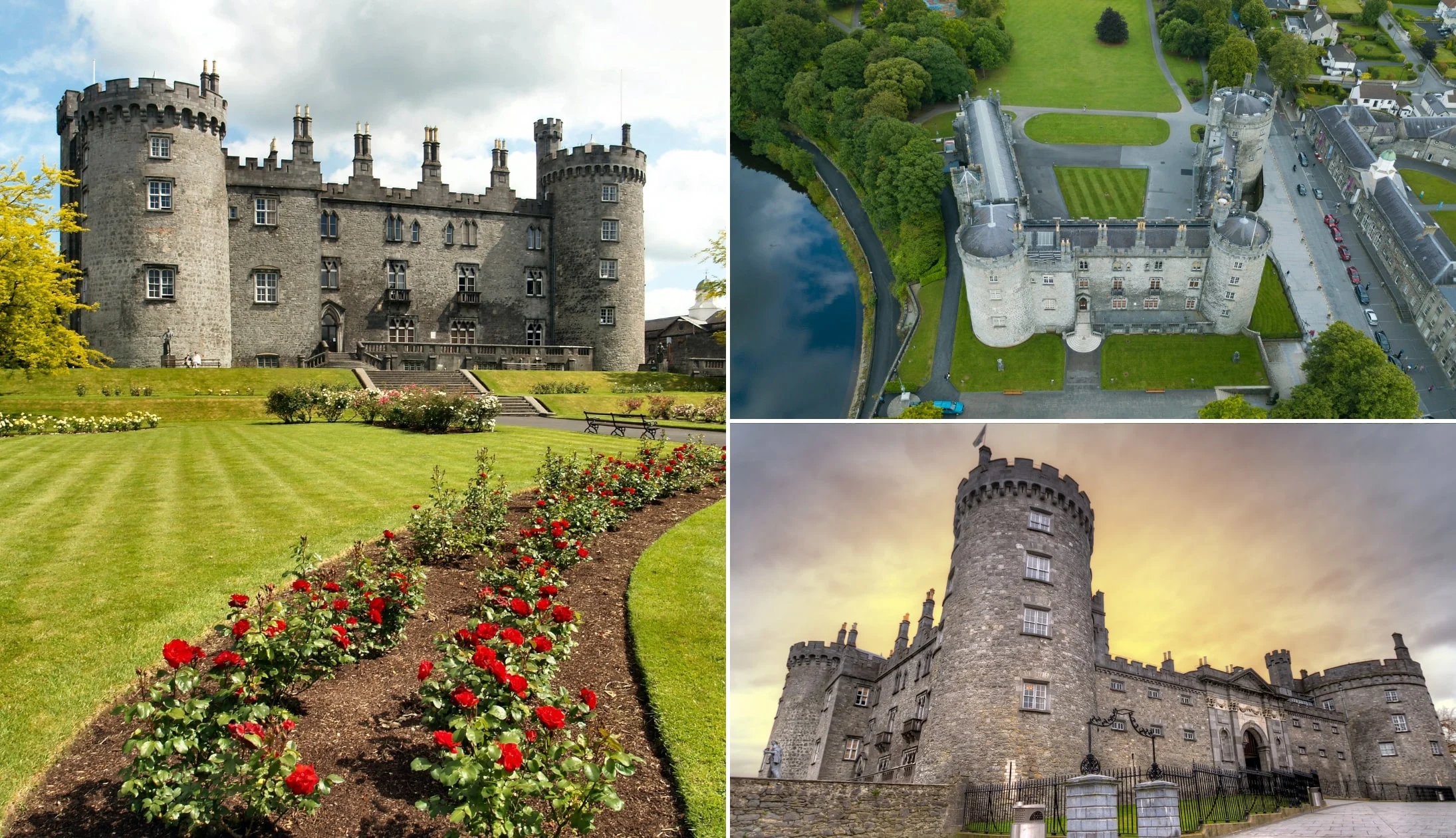
Photos via Shutterstock
Before we step back in time, let’s go over the basics.
1. Location
Located on the banks of the River Nore, Kilkenny Castle serves as the beating heart of the medieval town. The rest of the city spreads out around it, with the oldest, cobblestoned streets close by. It’s within easy walking distance of all city-centre accommodation, as well as some of the best pubs, restaurants, and cafes.
2. Admission
Ticket prices vary quite a bit depending on whether you’re looking to take the guided or the self-guided tour. For example, an adult guided tour ticket is €12 while a self-guided ticket is €8.
3. Opening hours
Kilkenny Castle is open to the public 7-days a week. From April to September it’s open 9:30 to 17:30, and from October to March 9:30 to 17:00.
4. Tours
There are both self-guided and guided tours available at Kilkenny Castle. On the self-guided tour, you’re free to roam the ancient castle and its grounds at your own pace. Various displays and exhibits reveal the rich history of the castle. Meanwhile, the guided tour follows a local expert as they delve into a tapestry of tales from the last few hundred years.
History of Kilkenny Castle
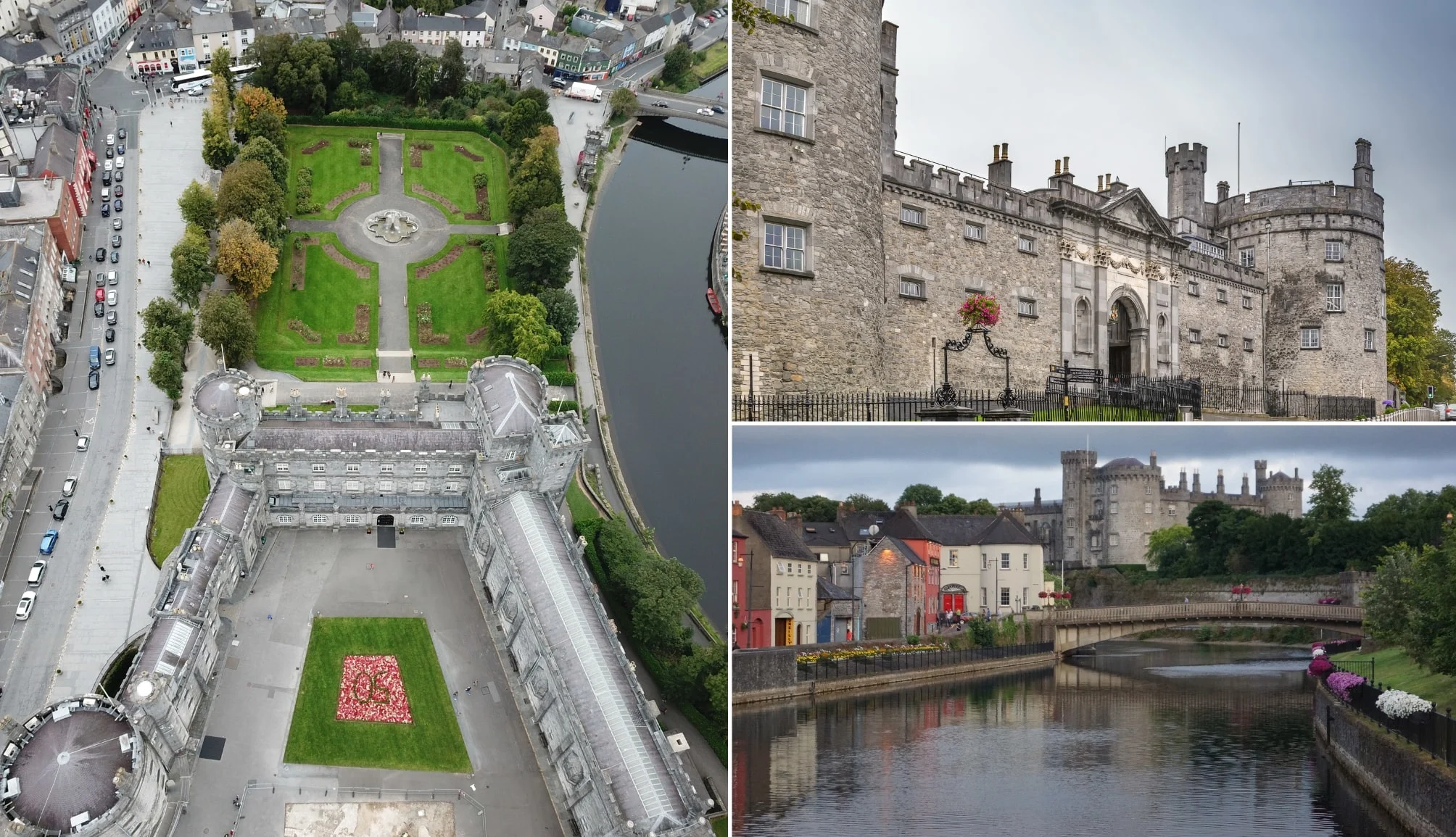
Photos via Shutterstock
Kilkenny Castle dates back to 1195 when it was built on the banks of the River Nore in order to control an important fording point across the river.
Built by the Normans during their invasion of Ireland, the domineering fortress played an essential role in the defense of the growing city.
Evolution
Built by Richard de Clare, also known as Strongbow and the 2nd Earl of Pembroke, the original structure was likely to have been constructed from wood.
However, it wasn’t long before it was upgraded. In 1260 the first stone castle was built on the site, featuring a square design with towers at each corner. Amazingly, 3 of these towers remain to this day.
The castle has been added to over the years, though unlike many fortresses and historic buildings, it has mostly survived whatever history has thrown at it.
However, during the Siege of Kilkenny in 1650 by Oliver Cromwell, the northeast tower and eastern wall were badly damaged and eventually torn down. Eleven years later, the castle was remodeled as a modern chateau.
The Butler Family
Formerly known as the FitzWalter family, the Butler family arrived in Ireland with the Norman invasion. They originally settled in Gowran, where James Butler, 3rd Earl of Ormond, built Gowran Castle.
Having grown wealthy and powerful, he bought Kilkenny Castle in 1391 after the Crown seized it from the seneschal of Kilkenny, Sir Gilbert De Bohun, following his death.
Many castles switch hands countless times over the years, but the Butlers managed to keep hold of Kilkenny Castle right up until 1967.
The years saw ups and downs, and by the 18th century the castle was becoming run down, a reflection of the dwindling fortunes of the Butler family at the time.
Things changed when John Butler, 17th Earl of Ormonde, married Anne Wandesford of Castlecomer, who brought wealth back into the family and enabled much-needed restoration work to take place.
Throughout the 19th century, further work was carried out with an aim to revive the castle’s original medieval appearance. In 1904, King Edward VII and Queen Alexandra visited, a sure sign that Kilkenny Castle had been returned to its former glory.
The 20th Century
The castle was once again under attack during the Irish Civil War, and in 1922, Irish Free State forces besieged republicans within its walls.
While there were no major human casualties, the castle itself took a battering that would take many years to repair. In 1935, George Butler, Earl of Ossory, moved with his family to London, abandoning the castle for 30-years.
In 1949, the castle was inherited by Arthur Butler, 6th Marquess and 24th Earl of Ormonde.
In 1967, aware that the castle was rapidly deteriorating yet determined not to let it fall to ruin, he sold it to the Castle Restoration Committee and the people of Kilkenny for a ceremonial price of £50.
He also bought the land in front of the castle, preventing anything from being built on it and thus obscuring the castle.
The handover ceremony – attended by Mick Jagger and Marianne Faithfull – marked the foundation of the Butler Society. Now belonging to the people of Kilkenny and having been lovingly restored, Kilkenny Castle is open to the public.
Things to do at Kilkenny Castle
One of the reasons that a visit to the castle is one of the more popular things to do in Kilkenny is due to the volume of history inside its walls.
There’s plenty to discover here, from the park and gardens to the tapestries, the collect and more.
1. The park and gardens
Kilkenny Castle is surrounded by 21 hectares of parkland. The park is free to enter and anyone can wander the grounds, taking in the beautiful shrubs and trees dotted throughout.
A number of paths and walkways enable you to explore the park, with the castle an ever-present backdrop.
The west side of the castle is where you’ll find the formal garden, complete with a stunning water fountain, numerous statues, and gorgeous flower beds. The park is also home to a kids’ playground, lake, and a wealth of wildlife.
2. The guided tour
One of the best ways to really immerse yourself in the history of Kilkenny Castle is to take a guided tour.
The knowledgeable guides will take you on a journey that spans hundreds of years of history as you meander through drawing rooms, cellars, impressive halls, immense dining rooms, and much more.
While the castle itself is certainly impressive, it’s the guides that really bring everything to life. Their passion is infectious while their knowledge seemingly knows no bounds!
3. The Tapestries
Historically, tapestries were a common decoration in 16th and 17th-century homes, providing colour as well as a talking point.
Kilkenny Castle is home to The Decius Mus Tapestries. More than 300-hundred years old, these tapestries relate the story of Decius Mus, a Roman tale dating back well over 2,000 years.
Once the prized displays of the Butler/Ormonde family, the years had taken their toll by the time the OPW took possession of the castle.
However, after a 3-year restoration process, they’re looking better than ever. Visitors can spend hours gazing at the images which tell the story over a number of panels, almost like a comic book!
4. The Collection
Art lovers can enjoy a veritable feast for the eyes at Kilkenny Castle, which boasts an immense collection of artwork. The Ormonde family portraits take up much of the picture room, with pieces dating back to the early 1600s.
Besides portraits, there are a huge number of internationally important pieces of art to indulge in, ranging from naturalistic scenes splashed on oil canvases to the exotic furnishings of the Oriental fashion of the 19th century.
5. The different corners of the castle
Kilkenny Castle is immense and there’s plenty of nooks and crannies to explore. The three floors contain an array of rooms to investigate, each complete with exhibits and displays that explain its function while relaying stories from the past.
The medieval foundation is the oldest part of the castle, dating back to the 13th century. The towers reveal the remarkable thickness of the stone walls, offering an explanation as to why they’ve survived for so long.
As you meander, you’ll come across grand staircases, dining rooms, entrance halls, libraries, drawing rooms, picture galleries, marble fireplaces, bedrooms, and so much more.
Things to do near Kilkenny Castle
Once you’ve finished delving into the history of Kilkenny Castle, there’s plenty more to do in town.
Best of all, everything’s just a short walk away, from more history and great food to lively pubs and more tours.
1. The Medieval Mile Museum (4-minute walk)
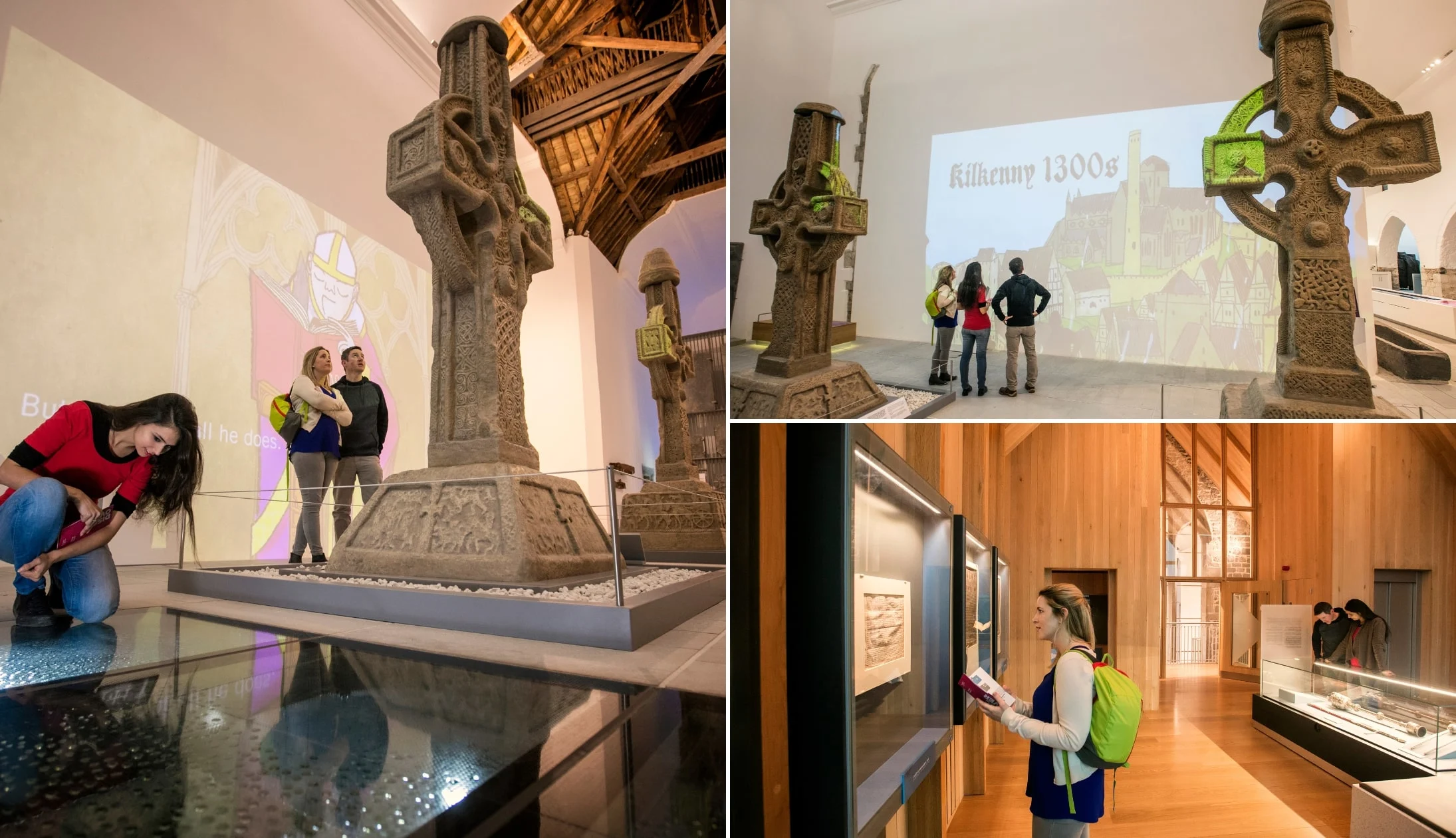
Photos courtesy Brian Morrison via Failte Ireland
Kilkenny’s medieval mile incorporates a host of monuments and attractions. The museum is located in the middle of the mile, in the 13th century St. Mary’s church and graveyard. Its various exhibits and displays cover more than 800-years of local history, taking in everything from ancient Celtic stone crosses to the Victorian era toys and coins. With guided and self-guided audio tours, you’ll feel as if you’ve stepped back in time.
2. Great food + old-school pubs
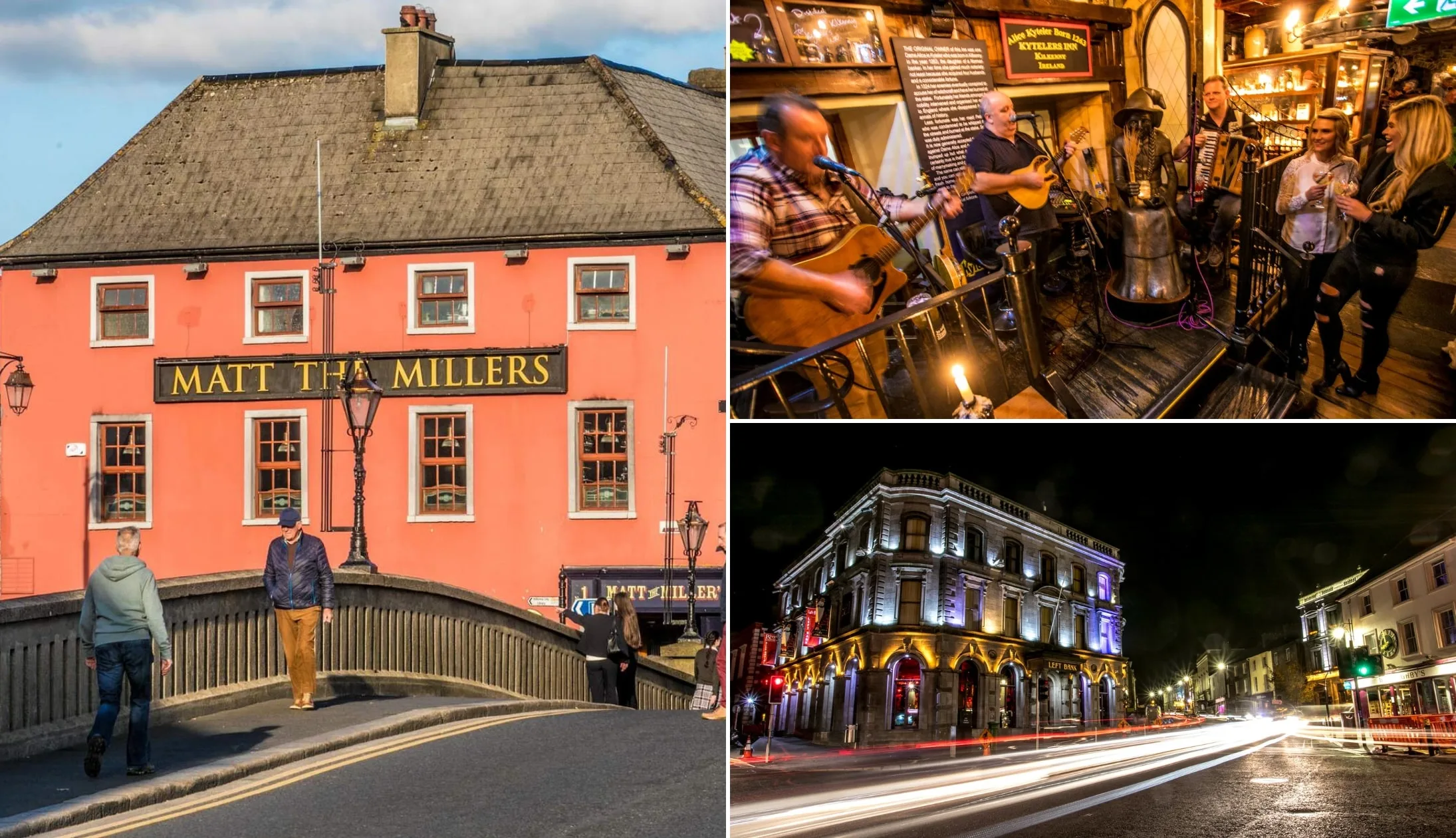
Photos courtesy Allen Kiely via Failte Ireland
Kilkenny is a hub for great food and drink. You’ll find a huge range of pubs to check out, including old-fashioned talking-pubs, live and trad music venues, and more modern late bars offering something for everyone. There’s even an inn that dates back to the 13th century! In terms of food, you’re spoilt for choice. Choose from a stunning Michelin Starred bistro, cosy restaurants serving the best local produce, and quaint cafes offering a smorgasbord of treats.
3. Rothe House & Garden (9-minute walk)
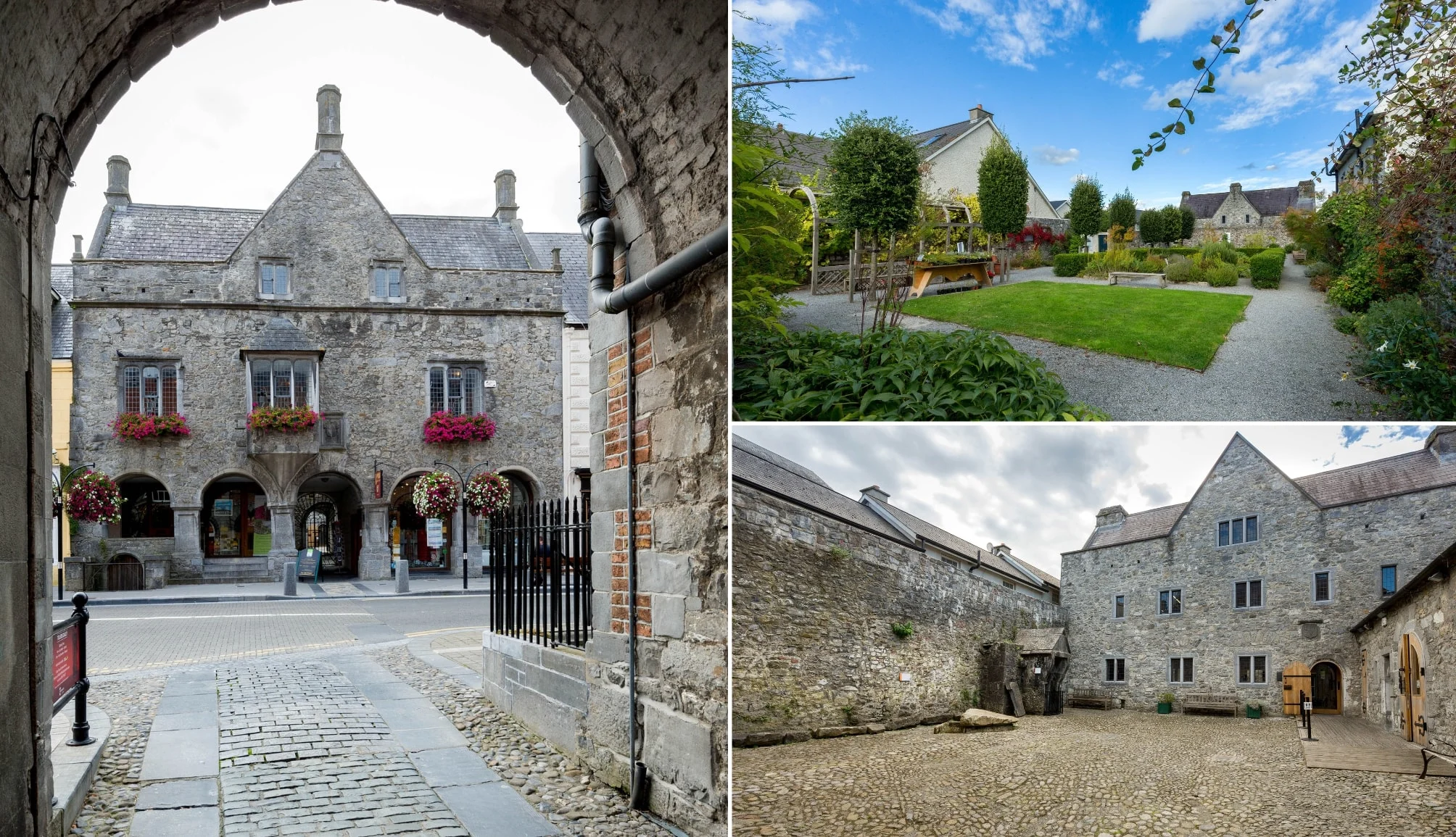
Photos courtesy Dylan Vaughan Photography via Failte Ireland
Located on the iconic Medieval Mile, Rothe House and Garden is a must-visit when you’re in Kilkenny. Explore this incredible example of a Tudor merchant house that dates back to 1594, taking in 3 separate buildings, its own museum, and the beautiful yet functional gardens.
4. Dominican Black Abbey (12-minute walk)
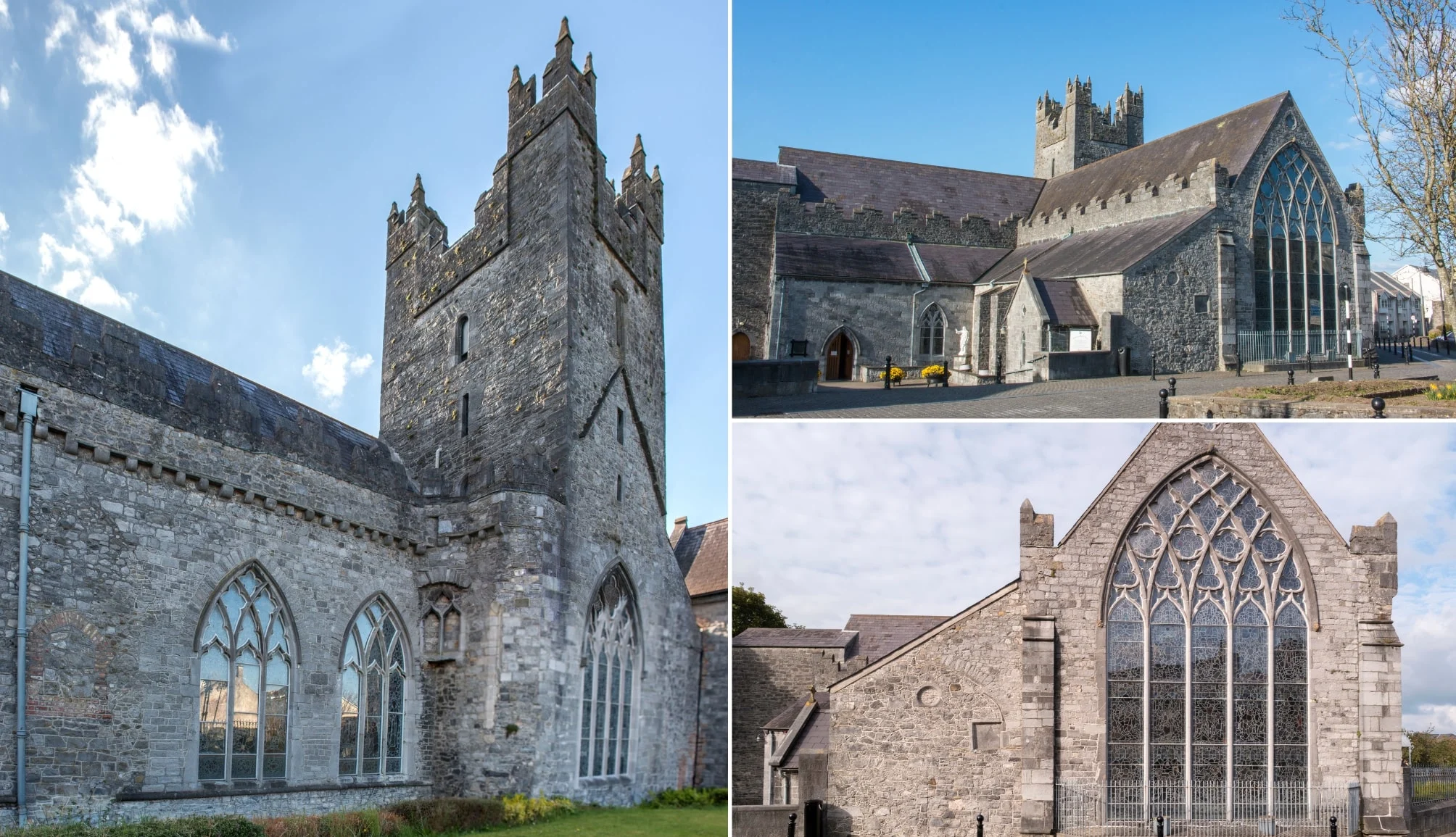
Kilkenny
Built in 1225, the Black Abbey is another icon from Kilkenny’s past that has managed to survive the long years. The star of the show is the incredible five-light window, a masterpiece of glasswork that covers the entire south-facing gable. There are plenty of other relics to check out as well, including statues and carvings.
Keith O’Hara has lived in Ireland for 35 years and has spent most of the last 10 creating what is now The Irish Road Trip guide. Over the years, the website has published thousands of meticulously researched Ireland travel guides, welcoming 30 million+ visitors along the way. In 2022, the Irish Road Trip team published the world’s largest collection of Irish Road Trip itineraries. Keith lives in Dublin with his dog Toby and finds writing in the 3rd person minus craic altogether.

